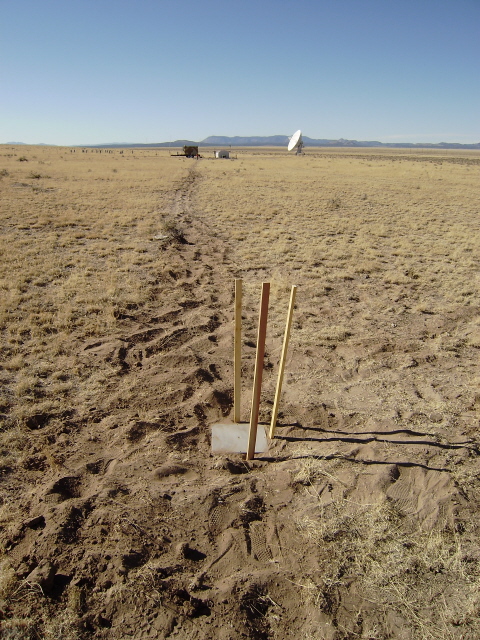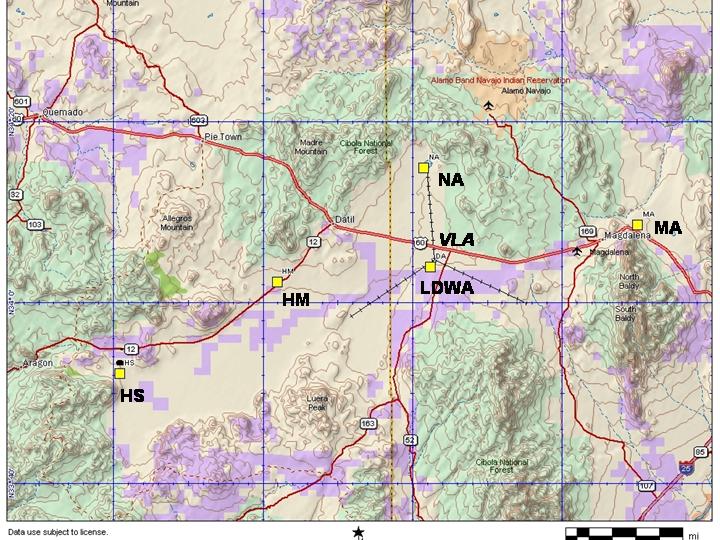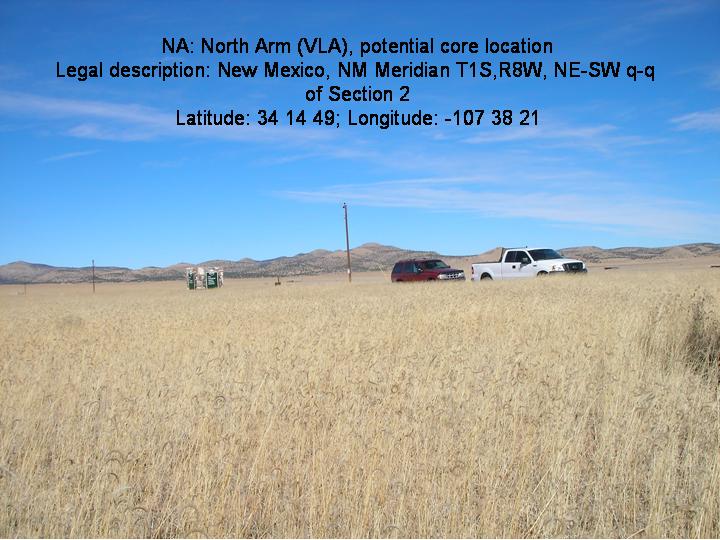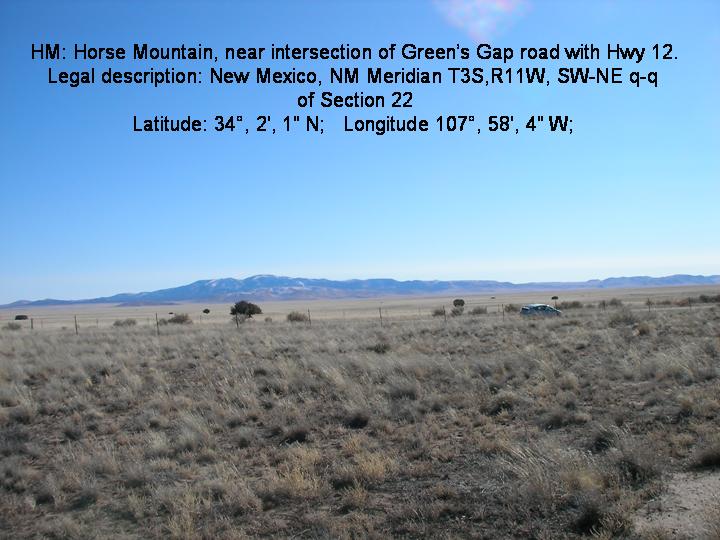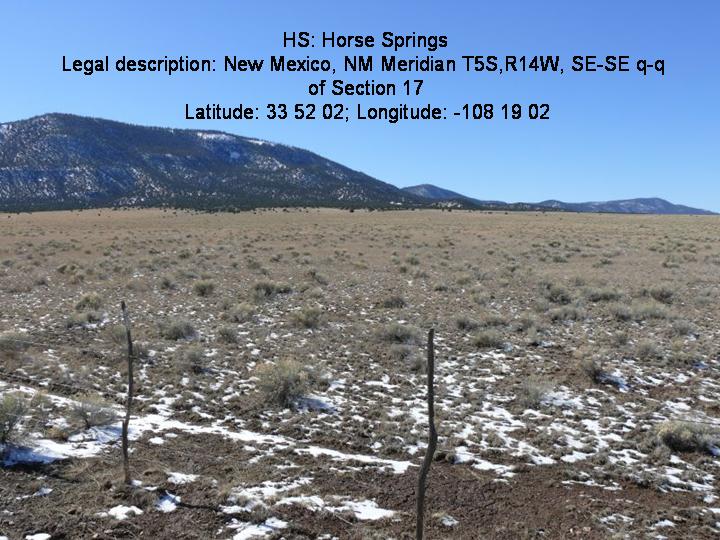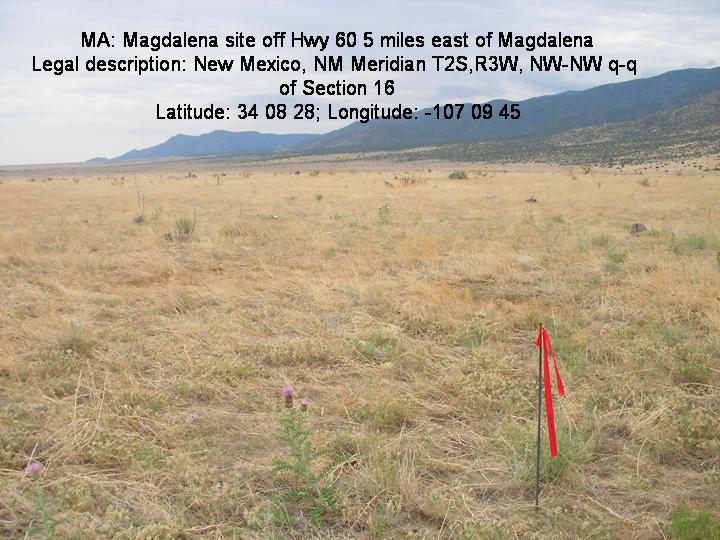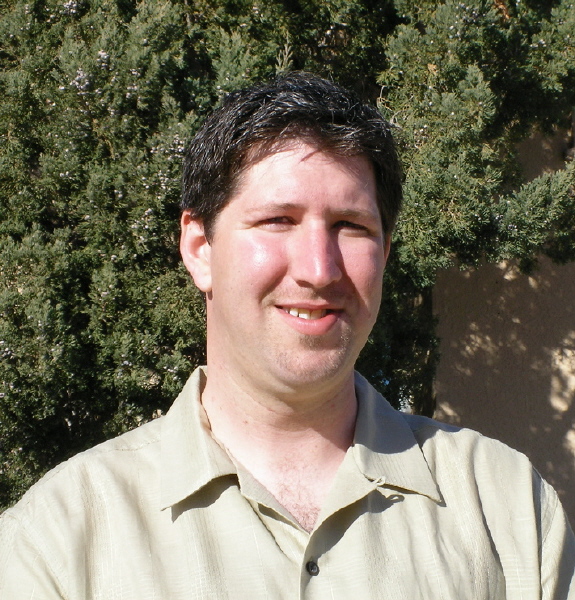News
2008 News
December 2008 - UT/ARL withdraws from LWA Project
The Applied Research Team from the University of Texas was responsible for many important aspects of the project, as well as earlier work with NRL rooted in Kassim's Accelerated Research Initiative - most notably the LWDA. They have completed their previous technical work and have no additional interest in the current technical work. They will be missed.
November 2008 - Mobile Workstation
The new mobile workstation is being fitted up for operation at the sites. Thanks to support from the Department of Physics and Astronomy at UNM, there is now a truck available to tow the workstation.
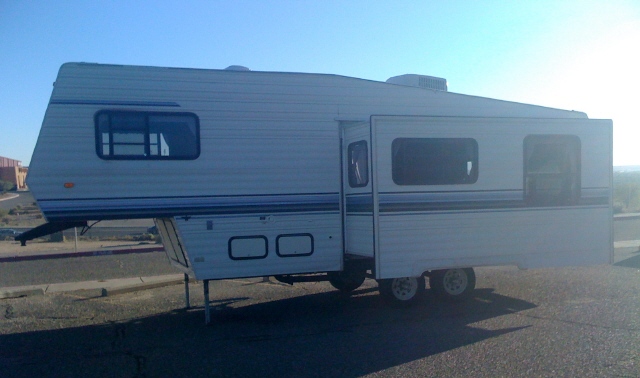
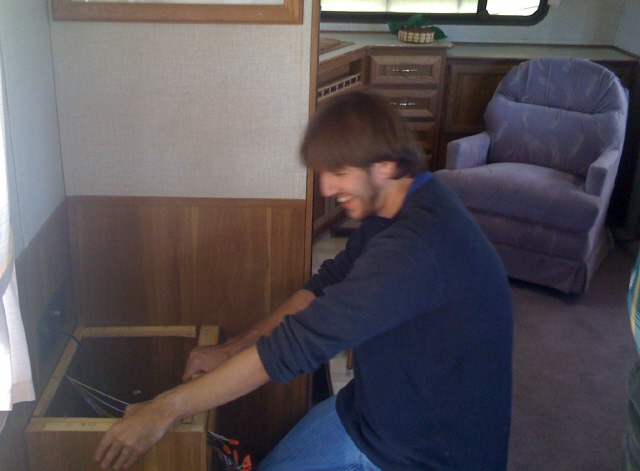
Outside and inside the new LWA Mobile Workstation.
November 24, 2008 - Power Line Interference Test
Tremblay and Kuniyoshi did RFI measurements on low voltage power lines in coordination with the Socorro Electric Cooperative, from whom we get our power. The basic result is that the impact is very modest over the range 1 to 100 MHz.
Trenching (November 2008)
Trenching between the LWDA site and the RTA site (300m away) was carried out on November 22. The previous, above-ground cable had been damaged. The LWDA-RTA interferometer is in continuous use, so replacement of the cable was necessary. But this work also enables us to do some measurements of the effects of dispersion in the cable under the varying environmental conditions, and gives us experience with the equipment and procedures for burying cables.
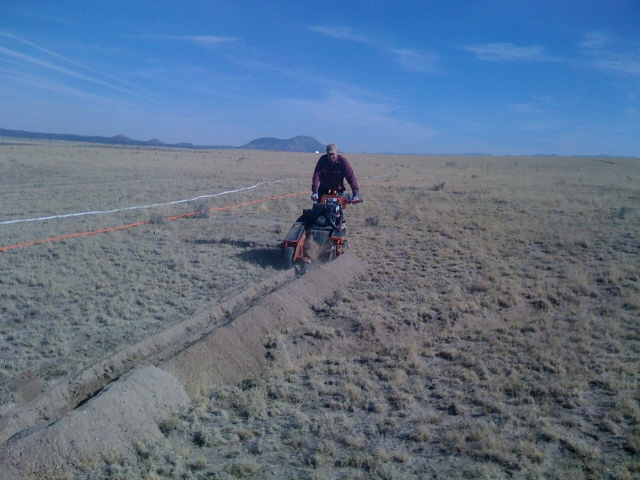
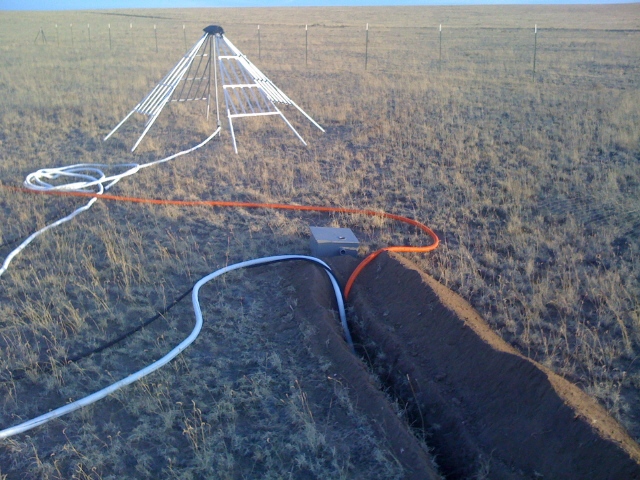
Making the trench with the trencher; cables from one of the blade antennas goes into the trench.
The trench goes 1,000 feet from the shelter which is seen in the distance to the LWDA Rapid Test Array (RTA). The junction box with its cover plate is shown in the foreground; it is located at 500 feet from the shelter.
October 2008 - Project Time-line updated
See Summary Table.
October 2008 - $2.8 million allocated to UNM for LWA
Of the 4th consecutive funding awarded for the LWA project, $2.8 million was allocated to the University of New Mexico to support their effort on Long Wavelength Array project.
September 2008 - The Jet Propulsion Laboratory joins the LWA Project
JPL has now officially joined the LWA.
"Brassboard" analog receiver built and tested (September 2008)
The "Brassboard" Analog Receiver for the LWA was designed at UNM by Joe Craig, LWA Systems Engineer. Each receiver board/module contains four independent receive channels. Each channel provides a maximum gain of 80dB, with 60dB of gain control in 2dB steps, spread out over two digital step attenuators which balance the receiver's noise figure against linearity performance. The receiver has a reconfigurable filter bank with three selectable filters; 20 MHz-80 MHz "Full Bandwidth" filter, 28 MHz-54 MHz "Reduced Bandwidth" filter, and a "Split Bandwidth" filter to provide additional independent gain control over the low-frequency portion of the spectrum (diplexer split at 32 MHz). Along with these filters, there is also an "FM Notch" filter to attenuate the FM band. In addition to gain and filtering, the receiver also has an integrated Bias-T for powering the Front-End Electronics (FEE) and control logic for switching on and off the FEE power. The logic interface is standard TTL/CMOS static I/O interfaced over a ribbon cable.
The spectrum shown is 100ms integration of 200MSPS time data, FFT'd with a RBW of 30kHz in the "Full Bandwidth" filter configuration. This data was acquired with the current LWA receive chain at the LWDA/VLA site on Sept. 6th, 2008.
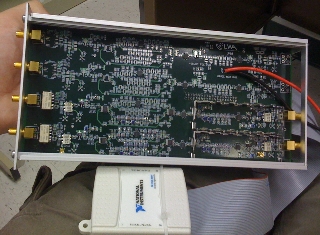
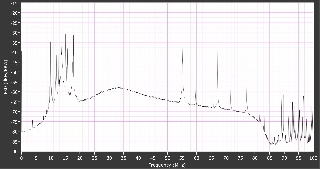
Joe Craig's brassboard analog receiver and the test spectrum.
5 LWA sites approved (September 3, 2008)
The FEMA CATegorical EXclusion (CATEX) has been signed and filed. This brings the number of LWA sites which have satisfied the Federal environmental permit process to 5 (LWDA + 4 with this action). The completion of the CATEX is a major step forward in the site acquisition.
The accompanying photos shows all 5 sites (as yellow squares) on a partial map of New Mexico and then photos of the individual sites.
August 2008 - URSI & Low Frequency Software meetings held in Chicago
Steve Ellingson and Ylva Pihlstrom gave invited talks at URSI and Ylva organized a one-day session on Low Frequency Software. LWA consortium members were well represented at both with their talks and posters. We hope that this will foster an increase in collaboration between various other groups and the LWA consortium.
June 2008 - Prof. Patricia Henning elected Vice-Chair of US Square Kilometer Array
UNM Department of Physics and Astronomy Assoc. Professor, Patricia Henning, begins 3-year term as Vice-Chair of the United States Square Kilometer Array Consortium on July 1, 2008. UNM Announcement.
LWA Programs Operation Director hired (February 2008)
Dr. Joe Craig was hired at UNM in February 2008 in the position of Programs Operation Director for the Long Wavelength Array (LWA). Joe is a RF Systems Engineer.
We welcome Joe Craig, the new Programs Operation Director, to the LWA Project Team. Joe received his BS in Electrical Engineering from New Mexico Institute of Mining and Technology.
January 2008 - LWA Systems Requirement Review passed
The LWA Project completed its System Requirement Review (SRR) in January 2008 following a review by our highly capable Technical Advisory Committee. This keeps us on track for a Preliminary Design Review (PDR) in late Spring of 2008.
